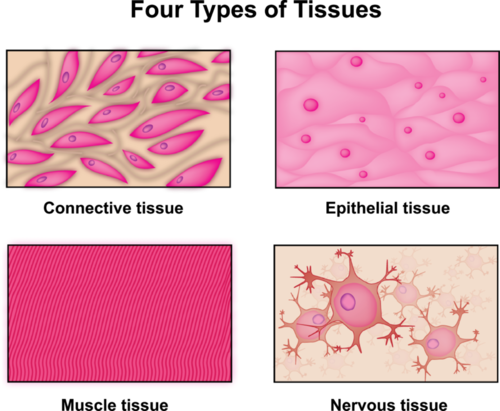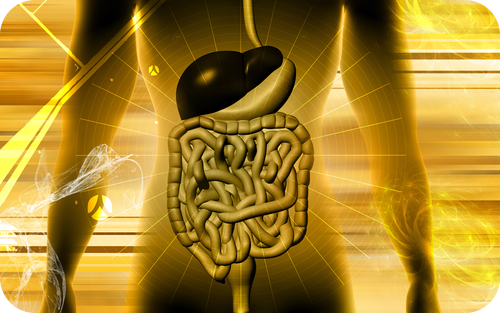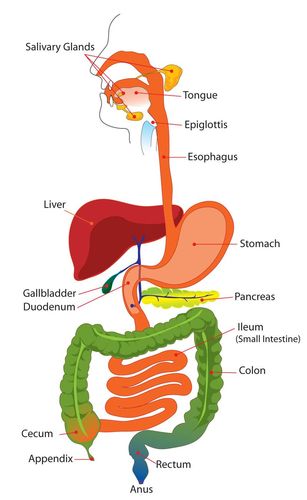READ: Basic Anatomy
| Site: | Mountain Heights Academy OER |
| Course: | Medical Forensics Q2 |
| Book: | READ: Basic Anatomy |
| Printed by: | Guest user |
| Date: | Saturday, 26 July 2025, 9:29 PM |
Organs and Organ Systems
Organs and Organ Systems
During this unit we will be learning about what medical examiners look for during an autopsy. An autopsy is when a body is examined in order to help determine the cause and manner of death. In order to better understand what a medical examiner can learn by looking at a body, we need to review some basic human anatomy.
How is the human body similar to a well-tuned machine?
Many people have compared the human body to a machine. Think about some common machines, such as drills and washing machines. Each machine consists of many parts, and each part does a specific job, yet all the parts work together to perform an overall function. The human body is like a machine in all these ways. In fact, it may be the most fantastic machine on Earth.
Levels of Organization
The human machine is organized at different levels, starting with the cell and ending with the entire organism. At each higher level of organization, there is a greater degree of complexity.The human organism has several levels of organization.
Cells
The most basic parts of the human machine are cells—an amazing 100 trillion of them by the time the average person reaches adulthood! Cells are the basic units of structure and function in the human body, as they are in all living things. Each cell carries out basic life processes that allow the body to survive. Many human cells are specialized in form and function, as shown in Figurebelow . Each type of cell in the figure plays a specific role. For example, nerve cells have long projections that help them carry electrical messages to other cells. Muscle cells have many mitochondria that provide the energy they need to move the body.
You can watch a video about some of the specialized cells of the human body and how they function at this link:
Different types of cells in the human body are specialized for specific jobs. Do you know the functions of any of the cell types shown here?
Tissues
After the cell, the tissue is the next level of organization in the human body. A tissue is a group of connected cells that have a similar function. There are four basic types of human tissues: epithelial, muscle, nervous, and connective tissues. These four tissue types, which are shown inFigure below , make up all the organs of the human body.
Organs and Organ Systems
After tissues, organs are the next level of organization of the human body. An organ is a structure that consists of two or more types of tissues that work together to do the same job. Examples of human organs include the brain, heart, lungs, skin, and kidneys. Human organs are organized into organ systems, many of which are shown in Figure below . An organ system is a group of organs that work together to carry out a complex overall function. Each organ of the system does part of the larger job.
Many of the organ systems that make up the human body are represented here. What is the overall function of each organ system?
Summary
- The human body is organized at different levels, starting with the cell.
- Cells are organized into tissues, and tissues form organs.
- Organs are organized into organ systems such as the skeletal and muscular systems.
CK-12 Foundation, http://creativecommons.org/licenses/by-nc-sa/3.0/
Respiratory System
Organs of the Respiratory System
The organs of the respiratory system that bring air into the body are divided among the upper respiratory tract and lower respiratory tract. These organs are shown in Figure below . In addition to the lungs , these organs include the pharynx, larynx, trachea and bronchi. The nasal cavity is also part of the respiratory system.
The organs of the respiratory system move air into and out of the body.
You can also watch a detailed animation of the respiratory system at this link:
- The pharynx is a long tube that is shared with the digestive system.
- The larynx , or voice box, contains vocal cords, which allow us to produce vocal sounds.
- The trachea , or wind pipe, is a long tube that leads down to the chest.
- The trachea divides as it enters the lungs to form the right and left bronchi .
Summary
- The organs of the respiratory system include the lungs, pharynx, larynx, trachea, and bronchi.
CK-12 Foundation, http://creativecommons.org/licenses/by-nc-sa/3.0/
Circulatory System
What's the most active muscle in the body?
The human heart. An absolutely remarkable organ. Obviously, its main function is to pump blood throughout the body. And it does this extremely well. On average, this muscular organ will beat about 100,000 times in one day and about 35 million times in a year. During an average lifetime, the human heart will beat more than 2.5 billion times.
The Circulatory System
The circulatory system can be compared to a system of interconnected, one-way roads that range from superhighways to back alleys. Like a network of roads, the job of the circulatory system is to allow the transport of materials from one place to another. As described in Figure below , the materials carried by the circulatory system include hormones, oxygen, cellular wastes, and nutrients from digested food. Transport of all these materials is necessary to maintain homeostasis of the body. The main components of the circulatory system are the heart, blood vessels, and blood.
The function of the circulatory system is to move materials around the body.
The Heart
The heart is a muscular organ in the chest. It consists mainly of cardiac muscle tissue and pumps blood through blood vessels by repeated, rhythmic contractions. The heart has four chambers, as shown in Figure below : two upper atria (singular, atrium ) and two lower ventricles . Valves between chambers keep blood flowing through the heart in just one direction.
The chambers of the heart and the valves between them are shown here.
Blood Flow Through the Heart
Blood flows through the heart in two separate loops, which are indicated by the arrows in Figure above . You can also watch an animation of the heart pumping blood at this LINK.
- Blood from the body enters the right atrium of the heart. The right atrium pumps the blood to the right ventricle, which pumps it to the lungs. This loop is represented by the blue arrows in Figure above .
- Blood from the lungs enters the left atrium of the heart. The left atrium pumps the blood to the left ventricle, which pumps it to the body. This loop is represented by the red arrows inFigure above .
Heartbeat
Unlike skeletal muscle, cardiac muscle contracts without stimulation by the nervous system. Instead, specialized cardiac muscle cells send out electrical impulses that stimulate the contractions. As a result, the atria and ventricles normally contract with just the right timing to keep blood pumping efficiently through the heart.
Summary
- The heart contracts rhythmically to pump blood to the lungs and the rest of the body.
- Specialized cardiac muscle cells trigger the contractions.
CK-12 Foundation, http://creativecommons.org/licenses/by-nc-sa/3.0/
Digestive System
Overview of the Digestive System
The digestive system consists of organs that break down food and absorb nutrients such as glucose. Organs of the digestive system are shown in Figure below . Most of the organs make up the gastrointestinal tract . The rest of the organs are called accessory organs .
The digestive system includes organs from the mouth to the anus.
The Gastrointestinal Tract
The gastrointestinal (GI) tract is a long tube that connects the mouth with the anus. It is more than 9 meters (30 feet) long in adults and includes the esophagus, stomach, and small and large intestines. Food enters the mouth, passes through the other organs of the GI tract, and then leaves the body through the anus.
At The Digestive Process link below, you can watch an animation that shows what happens to food as it passes through the GI tract.
Accessory Organs of Digestion
Other organs involved in digestion include the liver, gall bladder, and pancreas. They are called accessory organs because food does not pass through them. Instead, they secrete or store substances needed for digestion.
Functions of the Digestive System
The digestive system has three main functions: digestion of food, absorption of nutrients, and elimination of solid food waste. Digestion is the process of breaking down food into components the body can absorb. It consists of two types of processes: mechanical digestion and chemical digestion.
- Mechanical digestion is the physical breakdown of chunks of food into smaller pieces. This type of digestion takes place mainly in the mouth and stomach.
- Chemical digestion is the chemical breakdown of large, complex food molecules into smaller, simpler nutrient molecules that can be absorbed by the blood. This type of digestion begins in the mouth and stomach but occurs mainly in the small intestine.
After food is digested, the resulting nutrients are absorbed. Absorption is the process in which substances pass into the bloodstream, where they can circulate throughout the body. Absorption of nutrients occurs mainly in the small intestine. Any remaining matter from food that cannot be digested and absorbed passes into the large intestine as waste. The waste later passes out of the body through the anus in the process of elimination .
Summary
- The digestive system consists of organs that break down food, absorb nutrients, and eliminate waste.
- The breakdown of food occurs in the process of digestion.
CK-12 Foundation, http://creativecommons.org/licenses/by-nc-sa/3.0/








